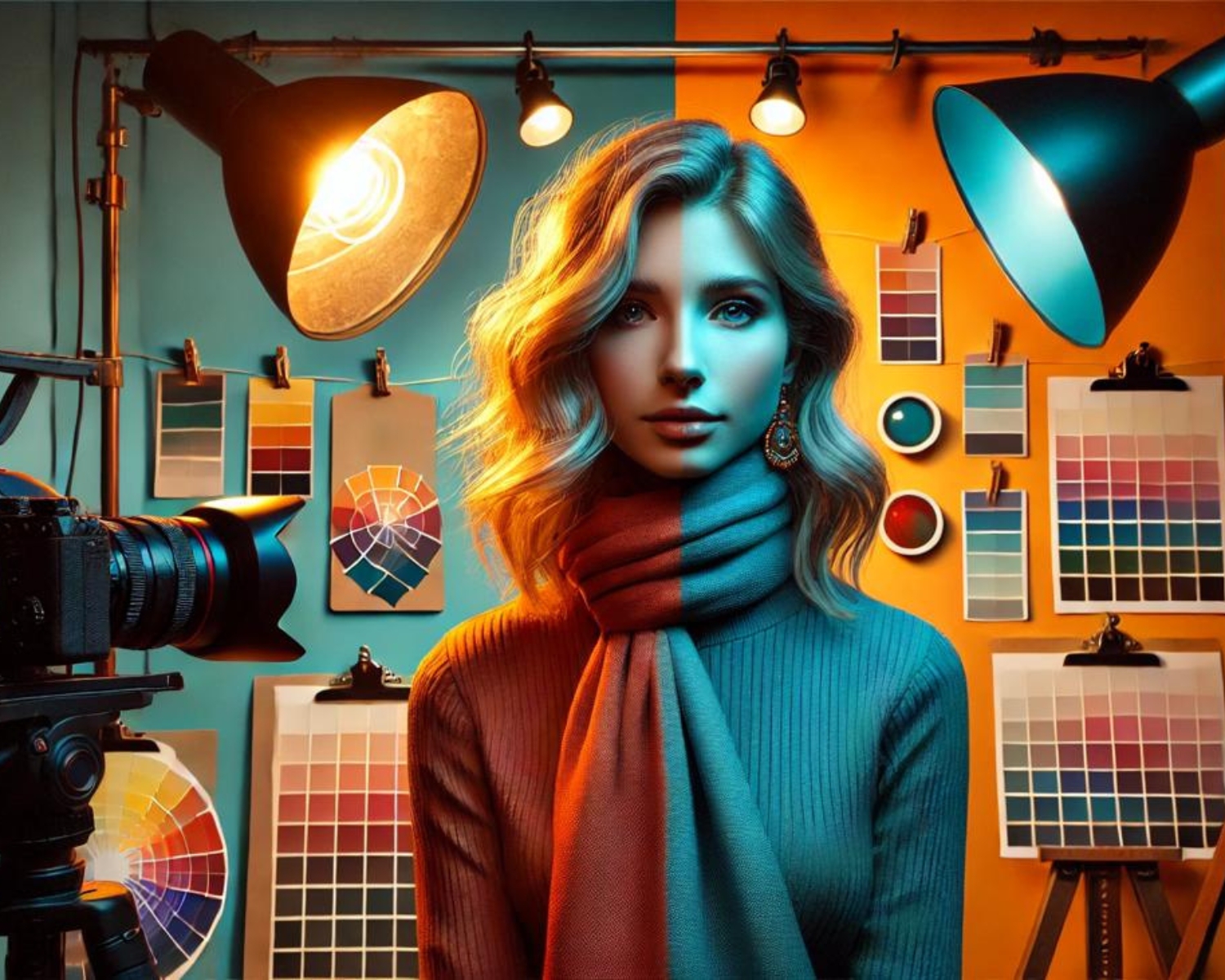Introduction
Color plays a crucial role in portrait photography, influencing an image’s mood, aesthetics, and overall impact. By understanding and applying color theory, photographers can create compelling compositions that enhance their subjects and captivate viewers. Here’s a guide to working with color theory in portrait photography.
1. Understand the Basics of Color Theory
At its core, color theory involves the relationship between colors and how they interact. The color wheel is a fundamental tool that helps photographers:
- Identify primary (red, blue, yellow), secondary (green, orange, purple), and tertiary colors.
- Understand complementary, analogous, and triadic color schemes.
- Explore warm (reds, oranges, yellows) and cool (blues, greens, purples) tones for mood setting.
2. Choose a Color Palette
Before shooting, decide on a color palette that complements your subject and the story you want to tell. Consider:
- Monochromatic Palettes: Use varying shades of a single color for a harmonious look.
- Complementary Colors: Combine colors opposite each other on the color wheel for high contrast and energy.
- Analogous Colors: Select colors adjacent to the color wheel for a more cohesive and soothing effect.
3. Consider Skin Tones
The subject’s skin tone is a key factor in color decisions. To ensure flattering results:
- Use colors that enhance natural skin tones rather than clash with them.
- Experiment with neutral backdrops or wardrobe pieces that complement the subject’s undertones.
4. Wardrobe and Styling
Wardrobe choices can significantly influence the color dynamics in a portrait. Collaborate with your subject to select:
- Clothing that aligns with the chosen color palette.
- Accessories or props that add pops of complementary colors without overwhelming the frame.
5. Backgrounds and Locations
The background is a vital element in color composition. When selecting or adjusting backgrounds:
- Choose colors that contrast or complement the subject’s clothing and features.
- Use natural elements, like foliage or water, to introduce harmonious tones.
- Experiment with studio backdrops to control and manipulate color more precisely.
6. Manipulate Light for Color Effects
Light affects how colors appear in a photograph. Techniques include:
- Golden Hour Lighting: Warm, soft tones create a romantic atmosphere.
- Cool Artificial Light: Adds a modern or dramatic edge.
- Colored Gels: Introduce creative and bold color overlays.
7. Post-processing and Color Grading
Editing is where you can refine and enhance your color choices. In post-processing:
- Adjust the white balance to ensure accurate skin tones.
- Use hue, saturation, and luminance (HSL) sliders to fine-tune colors.
- Apply color grading to achieve a cohesive and cinematic feel.
8. Convey Emotion with Color
Different colors evoke different emotions. Use this to your advantage by aligning color choices with the desired mood:
- Warm tones like red and orange evoke passion, energy, or warmth.
- Cool tones like blue and green convey calmness, serenity, or introspection.
- Neutral tones, such as beige and gray, provide subtlety and balance.
9. Experiment and Innovate
Don’t be afraid to break traditional rules of color theory to create unique and striking portraits. Experiment with unexpected color combinations and lighting techniques to develop your style.
Conclusion
Mastering color theory can elevate your portrait photography by adding depth, emotion, and visual harmony. Whether working with natural light or studio setups, paying attention to color interactions helps you create portraits that resonate with viewers and leave a lasting impression. With practice and creativity, you can harness the power of color to tell compelling stories through your lens.
#ColorTheory #PortraitPhotography #PhotographyTips #ColorGrading #PhotoEditing #CreativePhotography #LightingTechniques #PhotographySkills #ColorHarmony #VisualStorytelling



